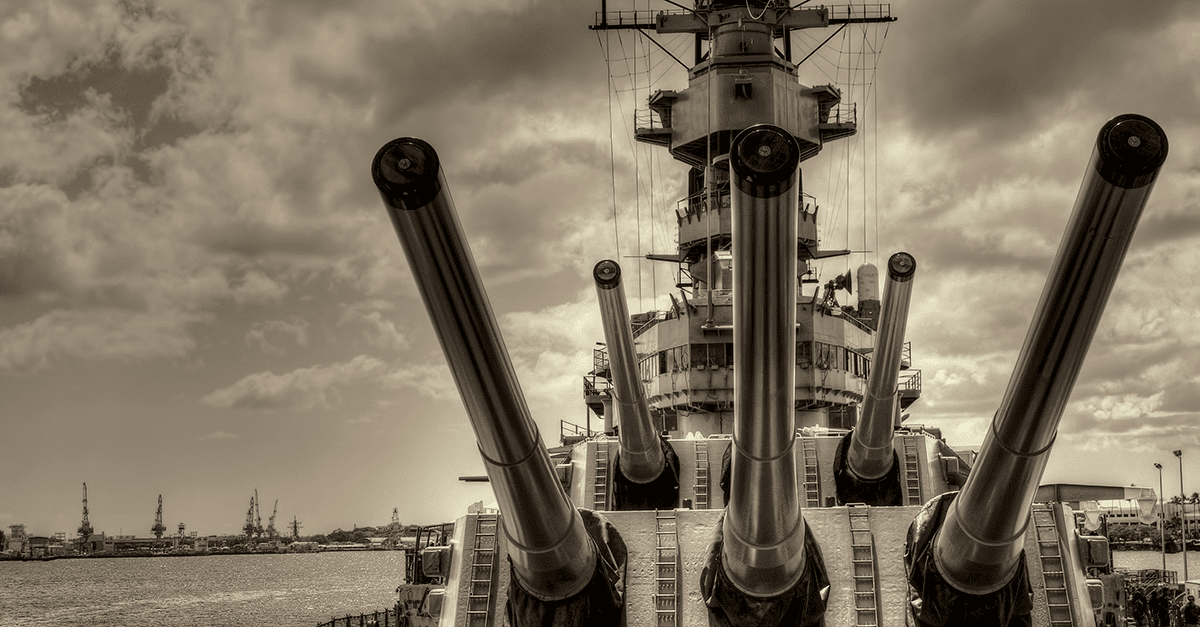Today, U.S. Navy veterans have the highest rates of mesothelioma of any military branch. For most of the 20th century, the Navy used tons of asbestos to fireproof and insulate ships, reaching a peak during the Vietnam War. Once the dangers of asbestos came to light, the Navy began removing the mineral. Despite these efforts, millions of Navy sailors were exposed throughout the 1900s.
Early Use of Asbestos in the Navy
The United States Navy began using asbestos regularly in the late 19th century.
The rise of steam-powered inventions, such as steam battleships, increased military demand for asbestos. This heat-resistant mineral could withstand the high temperatures of steam engines and help protect warships from enemy fire.
As the 20th century brought in world wars and technological advancements like dreadnought battleships, asbestos use in the Navy only increased.
Navy Asbestos Exposure During the 20th Century
The United States quickly emerged as a world power in the 20th century, increasing its naval strength as it competed with other nations for global resources.
For much of the 20th century, every branch of the U.S. military heavily used asbestos to insulate and fireproof barracks and all kinds of transportation — but none as much as the Navy.
World War I
In 1917, the United States officially joined Britain, France, and the rest of the Allies against the Central Powers in World War I. However, America had been preparing for war long before then.
The Naval Act of 1916 funneled $500 Million toward the construction of over 100 battleships, destroyers, submarines, and other Navy ships — all containing asbestos parts.
By the end of World War I, the United States had the world’s largest navy, with nearly 500,000 officers and enlisted sailors.
Still, it wasn’t until the 1930s that the U.S. Navy began using high amounts of asbestos-containing materials to construct and service its expanding ship fleet.
Unfortunately, the Navy was unknowingly exposing thousands of soldiers and shipbuilders to asbestos-related diseases like mesothelioma, lung cancer, and asbestosis.
World War II
As the Second World War drove the U.S. Navy to deploy thousands of battleships, aircraft carriers, and other vessels, asbestos use on Navy ships skyrocketed.
Heavy asbestos exposure was common among Navy workers such as:
- Boiler technicians
- Insulators
- Longshoremen
- Machinist mates
- Pipefitters
- Shipyard workers
Whether they were employed by the Navy or served aboard Navy ships, by the end of World War II, millions of people had been exposed to asbestos.
Nearly 4.3 million Americans worked in shipyards during World War II. Of these employees, nearly 14 in every 1,000 died of asbestos-related cancer.
Virtually all ships built by the Navy during World War II contained asbestos. As America moved on from the devastating war, this trend of heavy asbestos use would, sadly, continue in the Navy for decades.
Korean War and Vietnam War
The Korean War saw heavy asbestos use in nearly all types of military transportation — especially Navy ships. Over 300 ship products or parts built during the Korean and Vietnam War eras contained asbestos.
Even though the asbestos industry was aware of the mineral’s dangers by the 60s, the companies put profit over the wellbeing of millions of Americans, neglecting to warn the U.S. military about the harmful effects of asbestos.
As a result, Navy sailors during the Vietnam era were heavily exposed to asbestos used in ships, shipyards, and construction materials.
According to the U.S. Geological Survey, America consumed an average of more than 700,000 tons of asbestos during the last decade of the Vietnam War.
In the late 1970s, the dangers of asbestos became publicly known, and the government began removing asbestos products in the military.
Still, this process took decades. As late as the mid-1990s, asbestos exposure continued to be a risk for members of the Navy working in shipyards or below deck.
Asbestos on Navy Ships
During the 20th century, asbestos on Navy ships was prevalent — especially on the lower levels of the ship.
Nearly every ship commissioned from 1930-1970 contained several tons of asbestos insulation.
Asbestos could be found on Navy ships in:
- Adhesives
- Bedding compounds
- Cables
- Caulk
- Floor Tiles
- Gaskets
- Grinders
- Insulation
- Packing
- Paneling
- Piping
- Thermal materials
- Tubing
- Valves
The asbestos in these ships was easily disturbed and transported to other areas by exposed Navy personnel who brought the dangerous fibers with them on their clothes.
When Did the Navy Stop Using Asbestos?
The Navy officially stopped using asbestos in the mid-1970s, after the truth of asbestos exposure became known to the military and the public.
As the military began the earnest but difficult process of phasing asbestos out of their ships, buildings, and other assets, Navy sailors continued to be exposed as late as the early 1990s.
Today, most Navy ships use safe alternatives to asbestos.
Navy Asbestos Exposure During the 21st Century
Even though the Navy stopped using asbestos products in 1975, it took until the 21st century to remove the last traces of asbestos.
The War in Afghanistan and Iraq War
The Navy phased out asbestos materials in the late 20th century, but some Navy sailors may have been exposed to asbestos during the War in Afghanistan and the Iraq War.
Like many middle eastern countries, both Afghanistan and Iraq lack regulation on asbestos use, and the mineral is used heavily in construction as an insulator.
U.S. military deployed during the wars may have been exposed to asbestos when buildings containing asbestos were destroyed. The powerful desert winds were capable of blowing tiny asbestos fibers for miles, even potentially reaching Navy personnel with limited ground combat exposure.
Navy Asbestos Exposure Today
Although asbestos is not completely banned in the United States, asbestos use in the Navy is nearly nonexistent today.
Still, Navy members serving overseas in areas with little to no asbestos regulation may be at risk.
Thankfully, however, with the truth about asbestos widely known, members of the Navy are overwhelmingly safe from asbestos exposure, and those who were exposed can find help through the U.S. Department of Veterans Affairs (VA).
To learn more about VA benefits, get a free Mesothelioma Veterans Packet.


